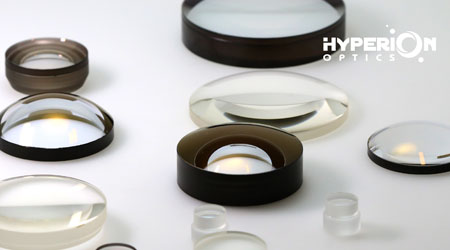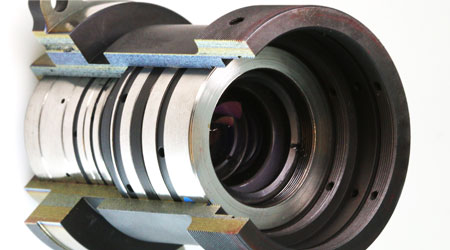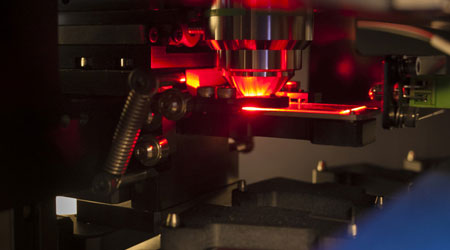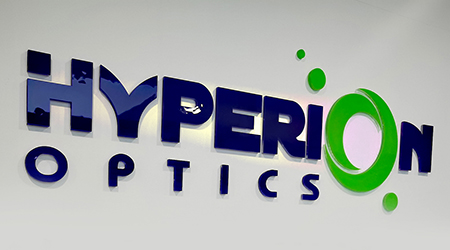Sapphire lenses, as an excellent optical material, are widely used in the manufacturing of high-precision endoscope lenses. With the increasing demand for endoscopic technology in the fields of medicine, industrial inspection, aerospace, and more, sapphire lenses have become one of the core materials in these fields due to their exceptional hardness, transparency, and thermal stability. The performance of endoscope lenses, as indispensable tools in medical diagnostics and minimally invasive surgery, is directly related to the clarity and accuracy of the images, making the optimization and application of optical properties especially important.
Sapphire lenses demonstrate excellent transparency in multiple optical windows, particularly in the ultraviolet, visible, and near-infrared regions. Their superior light transmission performance enables sapphire lenses to provide clear, high-quality images in endoscope lenses, unaffected by optical absorption and scattering. Compared to other optical materials, sapphire lenses have very high transmittance in these bands, effectively ensuring the imaging quality of endoscopes under different lighting conditions.
The Mohs hardness of sapphire lenses is 9, second only to diamond, making their surfaces resistant to scratching or abrasion. During the long-term use of endoscopes, the lenses often come into contact with body tissues or other hard objects. The surface of sapphire lenses can withstand these external frictions, maintaining the optical performance and image quality of the lens. This characteristic is particularly suitable for the medical field, especially in complex minimally invasive surgeries and internal diagnostics, where lens durability and cleanliness are crucial.
Sapphire lenses have significant advantages in terms of chemical stability. They can resist corrosion from various acids, alkalis, and solvents, allowing sapphire lens endoscopes to be used in harsh working environments for a long time without easily getting damaged. Additionally, the corrosion resistance of sapphire lenses reduces the attachment of dirt on the lens surface, improving the cleanliness and long-term usability of the lenses.
Sapphire lenses can maintain their optical performance under high-temperature conditions, hardly affected by temperature fluctuations. This characteristic is particularly suitable for certain endoscopic applications that need to operate in high-temperature environments, such as industrial non-destructive testing and aerospace. The lenses do not undergo thermal expansion or optical distortion due to temperature changes, thus ensuring stable imaging under various extreme conditions.
The optical design of endoscope lenses not only needs to take into account the characteristics of the material itself but also needs to incorporate multiple optical parameters into the design. Firstly, the focal length and field of view angle of the lens must be precisely calculated to ensure sufficient visibility and clarity within small spaces. The high transparency and stability of sapphire lenses make these parameter calculations more precise.
Secondly, the coating of the lens is also crucial, especially in multi-spectral imaging. The surface of sapphire lenses often needs anti-reflective treatment to reduce light reflection loss and increase imaging brightness. By applying anti-reflective coatings, the optical performance of sapphire lenses can be optimized, thereby maximizing image quality and contrast.
With continuous technological advancements, the application fields of sapphire lens endoscopes are also expanding. Especially in the medical field, the rapid development of minimally invasive surgery and remote diagnosis technology has led to an increasing demand for high-precision endoscope lenses. Thanks to their durability, clarity, and efficiency, sapphire lenses are gradually becoming an indispensable material in these applications.
In the industrial and aerospace fields, sapphire lens endoscopes are used to inspect components under high-temperature and high-pressure environments. Their outstanding optical performance and durability allow them to conduct effective long-term inspections under extreme conditions, reducing equipment downtime and improving safety. For example, in the inspection of spacecraft engines, sapphire lens can withstand high temperatures and provide clear images, ensuring the accuracy of fault diagnosis.
Sapphire lens endoscopes not only possess excellent optical properties but also play an important role in multiple fields due to their strong durability and stability. From medical to industrial, from routine inspection to high-precision applications, the value of sapphire lenses is becoming increasingly evident. With continuous innovation in manufacturing processes, the application prospects of sapphire lens endoscopes are bound to become broader, providing strong support for technological progress in related fields.
 Call us on:
Call us on:  Email us:
Email us:  R&D Center: 9B-4F 401,No.1 Qingnian Road Liando U Valley,Yuhua International Wisdom Valley, Nanjing, 210039 China
R&D Center: 9B-4F 401,No.1 Qingnian Road Liando U Valley,Yuhua International Wisdom Valley, Nanjing, 210039 China









 English
English  cn
cn  de
de  es
es  fr
fr 


